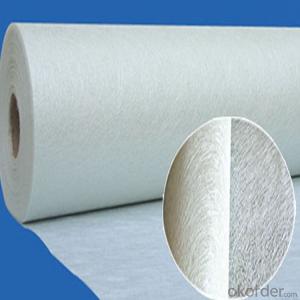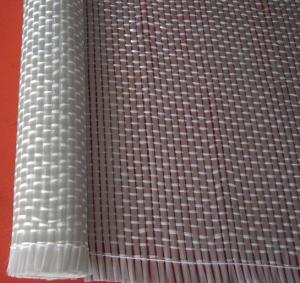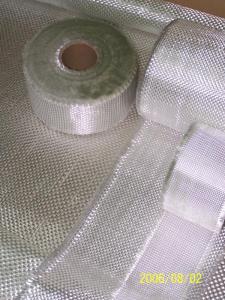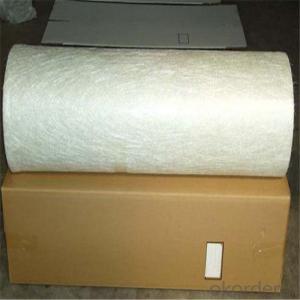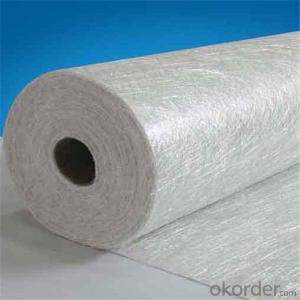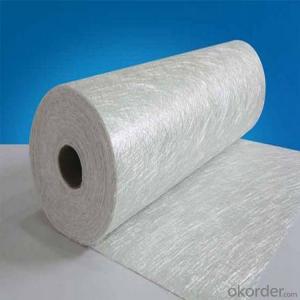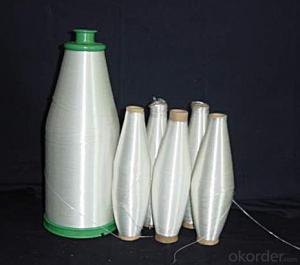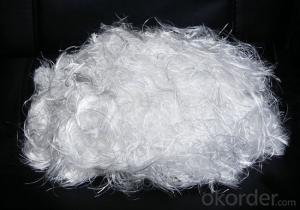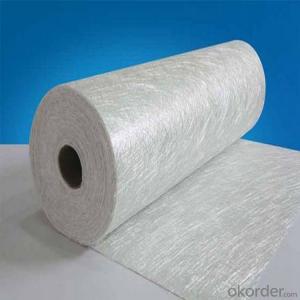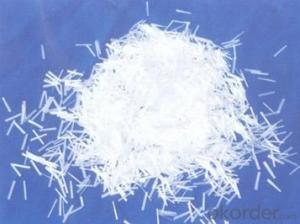1040mm Fibreglass Emulsion Chopped Strand Mat Fiberglass Thickness
- Loading Port:
- China main port
- Payment Terms:
- TT OR LC
- Min Order Qty:
- 1 kg
- Supply Capability:
- 5000 kg/month
OKorder Service Pledge
OKorder Financial Service
You Might Also Like
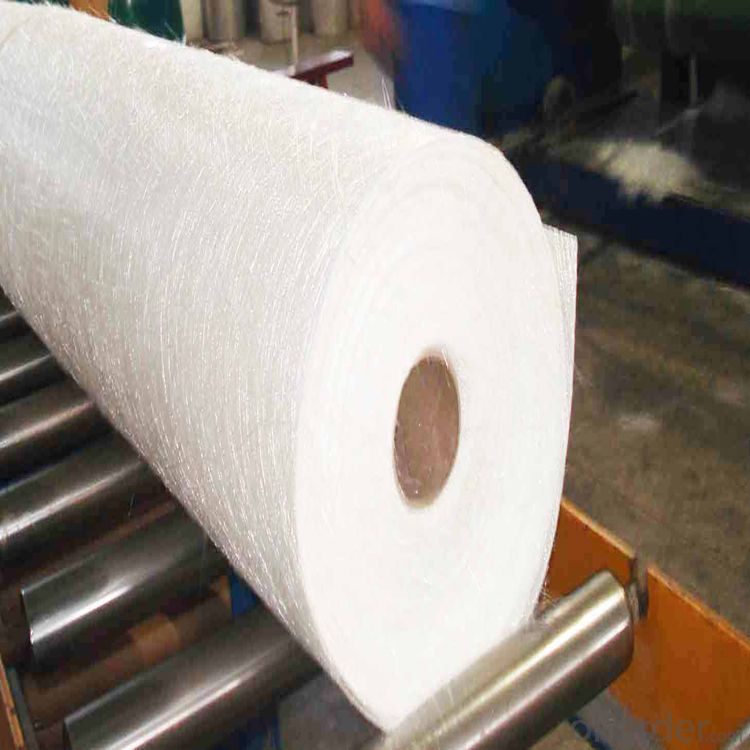
Product Description:
Chopped strand mat is made from chopped glass fibers, which are bonded with powder or emulsion binders. It can be used in hand lay-up process and continuous laminating process to produce FRP products, such as plates, lighting board, hull, bathtub, cooling towers, anti-corrosion materials, vehicles.
Specifications:
Item | Over Density | Moisture Content | Chop Density | Polyester Yarn | Width |
(g/m2) | (%) | (g/m2) | (g/m2) | (mm) | |
EMK300 | 309.5 | ≤0.15 | 300 | 9.5 | 50-3300 |
EMK380 | 399 | 380 | 19 | ||
EMK450 | 459.5 | 450 | 9.5 | ||
EMK450 | 469 | 450 | 19 | ||
EMC0020 | 620.9 | 601.9 | 19 | ||
EMC0030 | 909.5 | 900 | 9.5 |
Special products are available according to customer’s requirement.
Product Packaging:
Each Surface Tissue is wound onto a paper tube which has an inside diameter of 76mm and the mat roll has a diameter of 330mm. The mat roll is wrapped up with plastic film,and then packed in a cardboard box or wrapped up with kraft paper. The rolls can be vertically or horizontally placed. For transportation, the rolls can be loaded into a cantainer directly or on pallets.
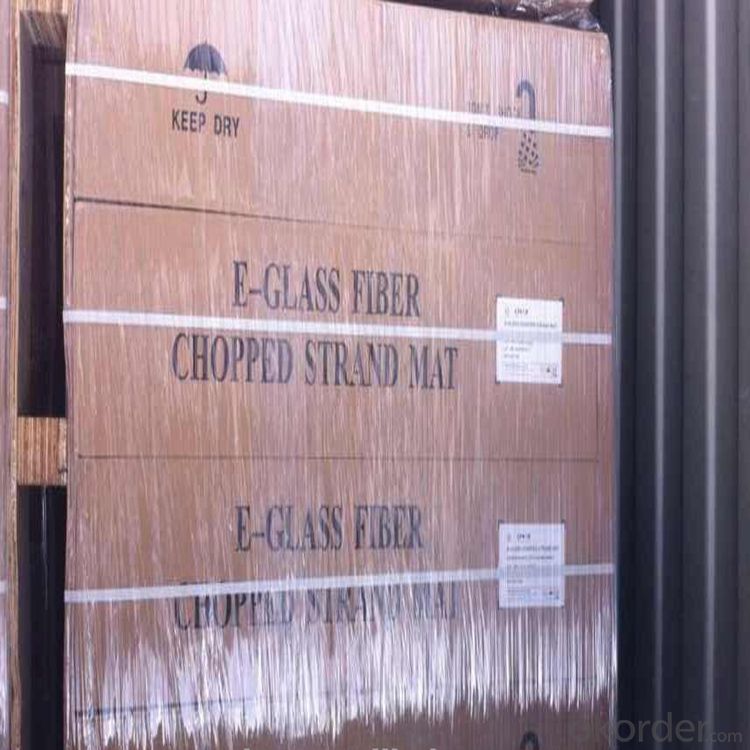
Product Storage:
Unless otherwise specified, Chopped Strand Mat should be stored in a dry, cool and rain-proof area. It is recommended that the room temperature and humidity should be always maintained at 15℃~35℃ and 50%~75% respectively.
Company Information
CNBM (China National Building Material) Group is the largest comprehensive building materials group in China that in integrate scientific research, manufacturing and logistics into one entity. The largest building materials and equipment specialists in China. Upon State Council approval, today CNBM owned more than 300 subordinate manufacturing factories and servicing companies. There are 6 fully owned public listed companies and 11 partially owned with substantial shares public listed companies. In many of these fields, CNBM is playing the leading role in the building industry in the country.

FAQ:
which kind of glass fiber sample and materials can you provide?
We can provide the glass fiber and glass fiber down stream products samples of E glass, C glass, ECR glass, High alkali glass. The products includes single end roving, assembled roving for different applications( Piping, SMC, panel, winding mill plate) , chop strand for BMC, engineering plastic (PA, PPA, PPT, POM, etc), chop strand mat (from 100gsm-900gsm) for automobile and water tank, etc, woven roving (270gsm-800gsm), surface tissue (25-50gsm), multi-axial fabric of different unit weight.
- Q:Can fiberglass chopped strand be used in marine applications?
- Fiberglass chopped strand is a viable option for marine applications. This versatile material possesses exceptional corrosion resistance, a favorable ratio of strength to weight, and notable impact resistance, rendering it suitable for marine environments. It is commonly employed in the construction of boats, kayaks, canoes, and other watercraft. By combining chopped strands with resins, a robust composite material is produced, capable of enduring the harsh sea conditions, such as exposure to saltwater, UV rays, and moisture. Furthermore, the ease of handling and ability to mold into various shapes, along with its commendable dimensional stability, contribute to fiberglass chopped strand's practicality. Given its durability and water resistance, this material is an exemplary choice for marine applications.
- Q:Is fiberglass chopped strand compatible with different resin systems?
- Yes, fiberglass chopped strand is compatible with different resin systems. Fiberglass chopped strand can be used with various types of resins such as polyester, epoxy, vinylester, and polyurethane. The compatibility between the fiberglass chopped strand and the resin system is crucial for achieving optimum mechanical properties and overall performance of the composite material. Proper selection of the resin system is essential to ensure good wetting and bonding of the chopped strands, which affects the strength, stiffness, and other properties of the final composite product. Manufacturers often provide guidelines and recommendations for the preferred resin systems to be used with their specific fiberglass chopped strand products to ensure compatibility and optimal performance.
- Q:Can fiberglass chopped strand be used in energy storage applications?
- Fiberglass chopped strand is not commonly used in energy storage applications. Typically, materials such as lithium-ion batteries or supercapacitors are utilized for energy storage due to their high energy density and efficiency. However, fiberglass chopped strand may find limited use in certain components or insulating elements within energy storage systems.
- Q:Can fiberglass chopped strand be used in the production of insulation foams?
- Insulation foams can utilize fiberglass chopped strand, which is known for its exceptional thermal performance and durability. Chopped strand refers to small lengths of fiberglass that can be combined with other substances like resins or foaming agents to form insulation foams. The incorporation of fiberglass chopped strand into insulation foams offers numerous advantages. Firstly, fiberglass acts as a proficient insulator, effectively trapping and preventing the transfer of heat or cold. This characteristic makes it an ideal choice for insulation materials that aim to regulate temperature and enhance energy efficiency. Secondly, fiberglass chopped strand enhances the structural integrity of insulation foams. By reinforcing the foam, the chopped strands enhance its strength, durability, and resistance to deformation. This is particularly crucial in applications where the foam will experience mechanical stress or compression. Lastly, fiberglass chopped strand is relatively lightweight, making it suitable for lightweight insulation foams. This is beneficial in industries like automotive or aerospace, where weight considerations are significant. In conclusion, fiberglass chopped strand is a valuable component in the production of insulation foams. Its thermal insulation properties, reinforcing capabilities, and lightweight nature contribute to the creation of high-performance insulation materials.
- Q:What are the applications of fiberglass chopped strand?
- Fiberglass chopped strand finds applications in various industries such as automotive, construction, aerospace, and marine. It is commonly used as reinforcement material in the manufacturing of composite products like fiberglass sheets, panels, and components. The chopped strand provides strength, stiffness, and impact resistance to these products, making them suitable for structural applications. Additionally, it is also employed as a filler material in thermoplastics and thermosetting resins to enhance their mechanical properties and facilitate easier processing.
- Q:How does the fiber orientation of fiberglass chopped strand affect the mechanical properties of composites?
- The fiber orientation of fiberglass chopped strand plays a crucial role in determining the mechanical properties of composites. Fiberglass chopped strand consists of short individual fibers that are randomly oriented in different directions. When these chopped strands are incorporated into a composite material, the fiber orientation can greatly impact the overall strength, stiffness, and other mechanical properties of the resulting composite. In general, a well-aligned fiber orientation in the composite can lead to improved mechanical properties. When the fibers are aligned in the direction of the applied load or stress, they can efficiently transfer the load and resist deformation, resulting in increased strength and stiffness. This alignment also enhances the load-bearing capacity of the composite material. On the other hand, a random or less aligned fiber orientation can lead to reduced mechanical properties. Randomly oriented fibers may not effectively distribute the applied load, leading to stress concentrations and potential failure points within the composite. This can result in decreased strength, stiffness, and overall performance. Furthermore, the fiber orientation can also impact other mechanical properties such as impact resistance, fatigue resistance, and dimensional stability. Proper fiber alignment can enhance these properties, making the composite material more resistant to impacts, cyclic loading, and dimensional changes. In summary, the fiber orientation of fiberglass chopped strand significantly affects the mechanical properties of composites. A well-aligned fiber orientation can enhance strength, stiffness, impact resistance, fatigue resistance, and dimensional stability, while a random or less aligned fiber orientation can lead to reduced performance in these aspects. Therefore, careful consideration of fiber orientation is essential in designing and manufacturing composites with desired mechanical properties.
- Q:Is fiberglass chopped strand suitable for electrical insulation?
- Fiberglass chopped strand is not typically considered suitable for electrical insulation. While fiberglass is known for its strength and durability, it does not possess the necessary dielectric properties to effectively insulate electrical components. Dielectric materials have a high resistance to the flow of electric current, preventing the risk of short circuits or electrical leakage. In contrast, fiberglass is a conductor of electricity, meaning it allows electric current to pass through it easily. Therefore, it is not recommended to use fiberglass chopped strand as an electrical insulator, as it may not provide the desired level of insulation and could potentially pose safety risks.
- Q:Is fiberglass chopped strand resistant to mold and mildew?
- Yes, fiberglass chopped strand is resistant to mold and mildew. The nature of fiberglass, along with its non-porous surface, makes it highly resistant to the growth of mold and mildew. Unlike organic materials such as wood or fabric, fiberglass does not provide a suitable environment for mold and mildew to thrive. Additionally, the use of a resin matrix in fiberglass manufacturing further enhances its resistance to mold and mildew. This characteristic makes fiberglass chopped strand an ideal material for applications where moisture or humidity is present, such as in bathrooms or outdoor structures. However, it is important to note that while fiberglass itself is resistant to mold and mildew, other factors such as improper installation, lack of ventilation, or exposure to water leaks can still lead to mold and mildew growth on other components of the structure.
- Q:Can fiberglass chopped strand be used in electrical insulation coatings?
- Indeed, electrical insulation coatings can make use of fiberglass chopped strand. Fiberglass, being a versatile material, possesses exceptional electrical insulation characteristics, rendering it appropriate for a wide range of electrical applications. By incorporating fiberglass in its chopped strand form, coatings can effortlessly acquire reinforcement, thus enhancing their electrical insulation capabilities. The incorporation of chopped strands not only augments the coating's mechanical strength and resistance to cracking, but also furnishes it with thermal stability and resistance to moisture. In conclusion, fiberglass chopped strand stands as a dependable choice to ameliorate the electrical insulation properties of coatings utilized in electrical applications.
- Q:Is fiberglass chopped strand suitable for applications requiring high heat resistance?
- Fiberglass chopped strand is unsuitable for applications that demand high heat resistance. Despite being renowned for its strength and durability, fiberglass possesses a relatively limited capacity to withstand heat when compared to alternative materials. When subjected to elevated temperatures, fiberglass has the potential to melt or distort, rendering it inappropriate for scenarios where heat resistance is paramount. In such instances, materials like ceramic fiber or specific metals would be more suitable options.
1. Manufacturer Overview |
|
|---|---|
| Location | |
| Year Established | |
| Annual Output Value | |
| Main Markets | |
| Company Certifications | |
2. Manufacturer Certificates |
|
|---|---|
| a) Certification Name | |
| Range | |
| Reference | |
| Validity Period | |
3. Manufacturer Capability |
|
|---|---|
| a)Trade Capacity | |
| Nearest Port | |
| Export Percentage | |
| No.of Employees in Trade Department | |
| Language Spoken: | |
| b)Factory Information | |
| Factory Size: | |
| No. of Production Lines | |
| Contract Manufacturing | |
| Product Price Range | |
Send your message to us
1040mm Fibreglass Emulsion Chopped Strand Mat Fiberglass Thickness
- Loading Port:
- China main port
- Payment Terms:
- TT OR LC
- Min Order Qty:
- 1 kg
- Supply Capability:
- 5000 kg/month
OKorder Service Pledge
OKorder Financial Service
Similar products
New products
Hot products
Hot Searches
Related keywords


